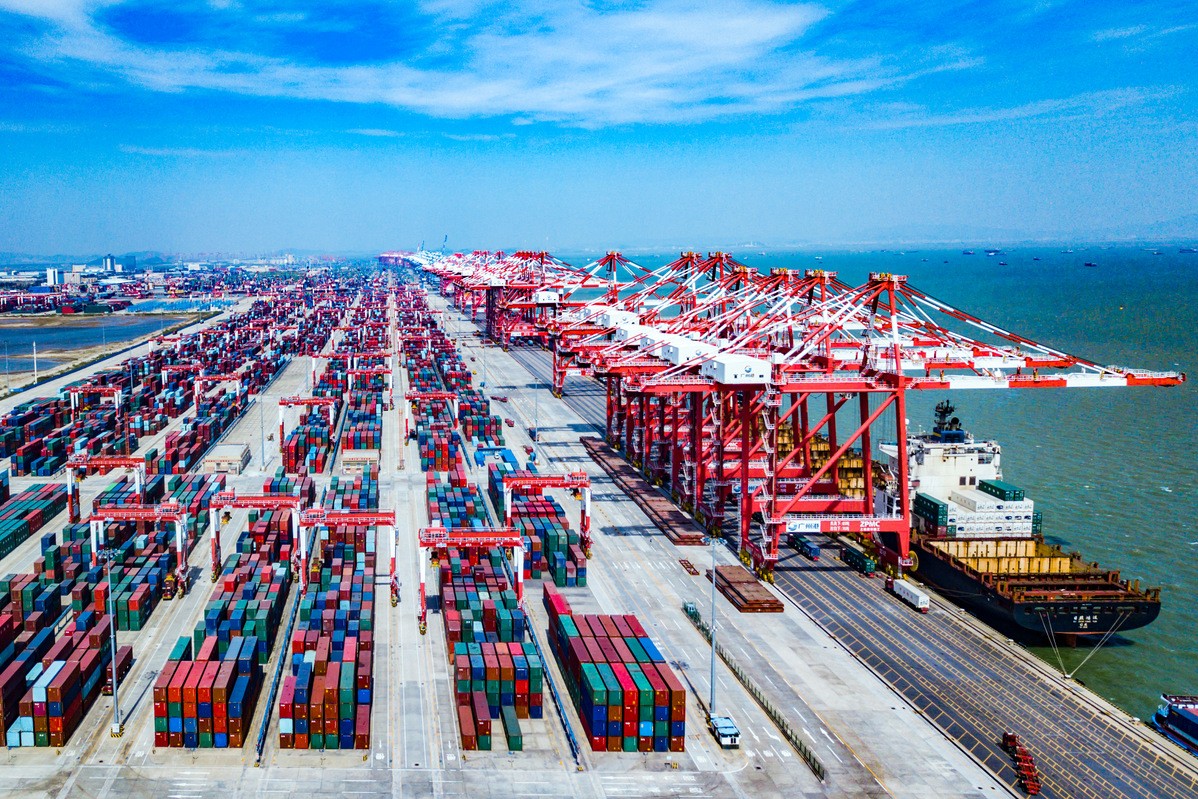Foreign trade set to post stable growth this year-[ the resilience of the industrial chain; manufacturers; logistics; cross-border e-commerce]
2022.07.08 SOURCE:CHINA DAILY

Photo shows a view of Nansha Port in Guangzhou, South China's Guangdong province. [Photo provided to chinadaily.com.cn]
The surging volume of foreign trade in China is squeezing some companies, which are scrambling to find workers for their factories to fill their export orders.
Zhao Shengmei, general manager of Newcom Group, a suitcase manufacturer based in Zhejiang province, would arrive at her office and immediately call the head of the human resource department to ask how many workers had been recruited the previous day, as their orders in the first half of 2022 have already reached the whole-year level of last year.
"At a peak time in early June, we exported more than 40 containers in a single day," Zhao said, adding that the company shipped only 10 containers to foreign markets during the same period last year. Now the company desperately needs to recruit 300 workers to meet the exploding demand for its products.
The company in Pinghu already employs more than 1,100 people and ships about 20 containers to overseas markets, mainly to the Netherlands, Japan and Canada, each day.
Analysts said China's foreign trade is expected to post stable growth this year, despite unprecedented challenges, which include high raw material costs and fierce competition from countries in Southeast Asia.
The profitability of exporters in most sectors improved during the second quarter. Major challenges facing export-oriented companies, such as the high costs of logistics, have eased, according to a survey released this week by the Beijing-based China Council for the Promotion of International Trade.
China's foreign trade rose 8.3 percent year-on-year to 16.04 trillion yuan ($2.4 trillion) in the first five months of 2022, according to the General Administration of Customs.
"Trade data got better not only from quarter to quarter, but also from month to month during the second quarter. June is likely to have experienced a strong foreign trade rebound and more energetic economic recovery," said Liu Ying, a researcher at the Chongyang Institute for Financial Studies at Renmin University of China.
The survey found that more than 25 percent of companies registered positive quarter-on-quarter revenue growth. More than 26 percent of the respondents were confident about year-on-year revenue growth, and about 28 percent said they expect their revenues to be at least the same as last year's level.
In the area of high-end manufacturing, Shi Hongliang, vice-president of Jiangsu Weiteli Motor Ltd, a Taizhou, Jiangsu province-based exporter of electric vehicle drive motors, said its orders for motors used on electric construction machinery during the January-June period exceeded the total order volume logged in 2021.
As many foreign companies have adopted a green approach to save on the cost of diesel fuel, Shi predicts the market in this category is expected to grow more than 300 percent year-on-year in 2022.
The survey also found that new trade formats such as cross-border e-commerce provided strong support to export growth, and the nation's policies to ease the burdens of foreign trade enterprises, such as ensuring smooth logistics and speeding up tax and fee reductions, have boosted the sector as well.
Progress in global market
Although many Chinese exporters, mainly in low-end industries, are facing transformation difficulties due to increased costs and reduced orders, the country's leading manufacturers have made progress in building a global presence, said Sherri He, managing director for China of Kearney, a United States-based management consulting firm.
She said that many of the country's manufacturers of finished products, especially in the garment and furniture industries, have already established factories in overseas markets. Many in fields such as auto parts and electric wiring are also setting up international operations.
A report released in late June by the People's Bank of China, the country's central bank, showed that the export order index came in at 41 percent in the second quarter, down 9.6 percentage points from the same period in 2021. The figure grew by just 0.1 percentage point from the first quarter of the year.
Liu Xiangdong, a researcher at the Beijing-based China Center for International Economic Exchanges, said China must enhance the resilience of the industrial chain and work with neighboring countries to mitigate risks and boost export volume in high-end manufacturing.


